Crypto Cards: Bridging Your Digital Assets with Everyday Spending
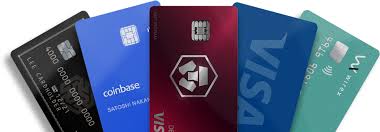
Introduction: Bridging Crypto and Everyday Spending
For years, the promise of cryptocurrency has captivated millions. A digital, decentralized form of money that could revolutionize finance. Yet, despite the excitement, there's been a persistent challenge for most crypto holders to actually spending their Bitcoin, Ethereum, or favorite altcoin on everyday essentials. Example like your morning coffee or weekly groceries. The dream of a Bitcoin-powered shopping spree often collides with a less convenient reality.
The core problem is this. Firstly, merchant acceptance for direct crypto payments remains limited. Most shops and online stores simply aren't set up to receive crypto.
Secondly, the very volatility that makes crypto exciting for traders also makes it impractical for daily spending. Who wants to buy a pizza today with an asset that might be worth 20% more or less tomorrow? This gap between holding digital wealth and using it effortlessly has been a significant barrier to mainstream crypto adoption.
But what if there was a simple solution that allowed you to tap into your crypto holdings anywhere traditional cards are accepted? Here is where the crypto card comes into play. These innovative cards are designed to act as your immediate bridge, converting your digital assets into fiat currency at the exact moment of purchase. They empower you to spend your crypto balance seamlessly, whether you're at a local cafe, shopping online, or traveling abroad.
In this article, we'll dive deep into how crypto cards work behind the scenes, explore the benefits they offer crypto users (think cashback in crypto), and examine the different types available in the market. We'll also cover crucial considerations like fees, taxation, and security, giving you everything you need to decide if a crypto card is the next essential tool in your digital wallet.
What Exactly is a Crypto Card?
At its core, a crypto card might look and feel just like the debit or credit card you already carry in your wallet. It supports a Visa or Mastercard logo, has a chip for payments, and works seamlessly at millions of merchants worldwide. The magic, however happens behind the scenes! These cards are directly linked to your cryptocurrency holdings, allowing you to spend digital assets in places that don't directly accept crypto.
So, how does it work?
When you swipe, tap, or enter your card details online, the crypto card provider instantly converts the necessary amount of your cryptocurrency (whether it's Bitcoin, Ethereum, a stablecoin like USDC, or another supported asset) into the local fiat currency (like USD, EUR, or SGD). This conversion happens in real-time at the point of sale, meaning the merchant receives fiat money, and you get to spend your crypto. It's a frictionless way to bridge your digital assets into everyday life.
Are they debit or credit?
While some providers have explored crypto-backed credit lines, the vast majority of crypto cards available today function as debit cards. This means you need to have cryptocurrency pre-loaded onto your account/wallet to spend it. You're spending your existing crypto balance, not borrowing against it. This typically makes them accessible to a wider range of users and simplifies the underlying mechanics compared to a traditional credit cards.
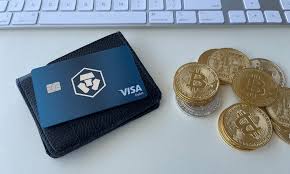
The Key Players Behind the Card:
For a crypto card to function, several entities work together:
- The Crypto Card Issuer: This is the company that provides the card, like Coinbase, Crypto.com, Nexo, or Binance. They manage your crypto balance, facilitate the conversion, and handle the card services.
- Your Crypto Wallet/Account: The card is directly linked to a crypto balance held within the issuer's platform or a linked wallet. This is where your funds reside before conversion.
- The Payment Network: This is typically a major global network like Visa or Mastercard. They provide the infrastructure that allows the card to be accepted by merchants worldwide, processing the transaction in fiat currency.
In essence, a crypto card leverages existing global payment methods to make your digital assets spendable just like traditional methods, abstracting away the complexity of crypto for the merchant and providing convenience for the user.
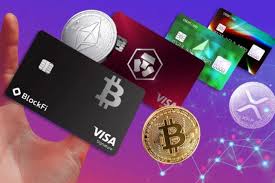
How Do Crypto Cards Work? The Mechanics of Spending Digital Assets
While a crypto card feels just like a regular debit card to the user, there's a sequence of events that takes place behind the scenes to convert your digital assets into spendable fiat currency. It’s a seamless mix of traditional finance infrastructure and blockchain innovation.
The Step-by-Step Process: From Crypto to Coffee
- Fund Your Card (or Linked Account): Before you can spend any money, you need to ensure your associated crypto card account has sufficient digital assets. This usually involves transferring Bitcoin, Ethereum, a stablecoin, or other supported cryptocurrencies from your personal wallet or exchange account into the dedicated account linked to your crypto card. Some cards allow direct linking to your main exchange balance, while others require a separate top-up.
- Make a Purchase: You swipe, tap, or enter your card details at any merchant that accepts Visa or Mastercard. For the merchant, it's a completely standard transaction, just like any other card payment.
- Real-Time Authorization & Conversion: This is where the crypto magic happens at lightning speed:
- The payment network (Visa or Mastercard) receives the transaction request from the merchant's terminal.
- The request is then sent to your crypto card issuer (e.g., Coinbase, Crypto.com).
- Your issuer instantly checks your linked crypto balance. If you have enough crypto to cover the purchase, their system calculates the exact amount of cryptocurrency needed to equal the fiat price (e.g., $5.00 for coffee) based on the current exchange rate.
- The specific amount of crypto is automatically converted into fiat currency in real-time. This is often where conversion fees might apply
- Transaction Approval: The fiat funds are then immediately sent through the payment network to the merchant's bank. The transaction is approved, and your payment goes through.
- Confirmation & Deduction: You receive a confirmation (often via app notification) that your purchase was successful, and the corresponding amount of cryptocurrency is deducted from your linked account. All of this typically happens in seconds, often faster than some traditional bank transfers.
Behind the Scenes: The Power of Payment Rails
This entire process relies heavily on the established global payment provided by companies like Visa and Mastercard. Your crypto card acts as a sophisticated intermediary:
- Front-End Familiarity: For you, it's a familiar card-swiping experience.
- Back-End Innovation: For your card provider, it's a complex, real-time cryptographic and financial operation. They are essentially performing an instant cryptocurrency-to-fiat exchange on your behalf for every transaction. This ensures that merchants never have to worry about receiving crypto directly or managing its volatility; they simply receive fiat money as usual.
This clever integration is why crypto cards are so powerful! They abstract away the complexities of the blockchain from the point of sale, making crypto truly spendable in the everyday world.
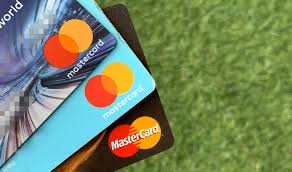
Why Get a Crypto Card? The Benefits for Crypto Users
Now that we've seen how crypto cards work, you might be asking: "Why should I get one?" The answer lies in the powerful combination of convenience, financial flexibility, and unique rewards that these cards offer, making your crypto assets more useful than ever before.
Imagine having using Mitosis for ur everyday DeFi, be it EOL or Matrix.
Seamless Everyday Spending: Your Crypto, Anywhere
The most immediate and obvious benefit is the sheer convenience. Your crypto holdings are no longer confined to exchanges or DeFi protocols. they become spendable at millions of merchants worldwide that accept Visa or Mastercard. Want to grab lunch, buy groceries, or pay for your online subscriptions with Bitcoin? A crypto card makes it effortless. It breaks down the barrier between your digital assets and the physical economy, integrating crypto into your daily life without needing to find crypto specific vendors.
Rewarding Spends: Cashback in Crypto
Many crypto card providers offer attractive rewards programs, a feature that often outperforms traditional fiat credit cards. Instead of earning airline miles or generic cashback, you can get a percentage of your spending back directly in cryptocurrency! Sometimes even in the card's native token or a popular asset like Bitcoin. Imagine earning BTC every time you pay for your coffee! This turns everyday spending into an opportunity to accumulate more digital assets, adding a compelling incentive for crypto enthusiasts.
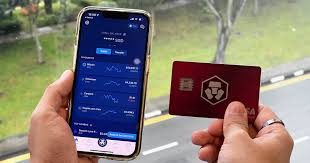
Unparalleled Accessibility: Bridging Traditional Retail
For crypto to truly go mainstream, it needs to be accessible in the places where people already spend their money. Crypto cards achieve this by leveraging established payment networks. They remove the headache of finding merchants that accept direct crypto payments, allowing you to use your digital assets in virtually any store, restaurant, or online platform globally. This universal acceptance is crucial for expanding crypto's reach beyond early adopters and specialized communities.
Financial Flexibility: No Need to "Cash Out"
Before crypto cards, spending crypto often meant a multi-step process: selling your crypto on an exchange, waiting for a fiat withdrawal to your bank account, and then finally spending that fiat. This process can be slow and sometimes involve additional fees that make it not worth the trouble. Crypto cards eliminate these steps. You can retain your assets in crypto form until the very moment of purchase, providing incredible financial agility and eliminating the need to "cash out" to a bank account just to cover an expense. Your crypto remains on-chain (or on your linked exchange account) until it's needed, maximizing your exposure to potential gains while still allowing liquidity.
Important Note: Mind the Tax Implications!
While incredibly convenient, it's crucial to remember that each time your crypto card converts crypto into fiat for a purchase, it's generally considered a taxable event in many jurisdictions (like the U.S.). This means that if the crypto you're spending has increased in value since you acquired it, you might owe capital gains tax on that appreciation. It's essential to keep accurate records of your transactions and consult with a tax professional to understand your obligations, as this can add a layer of complexity not present with traditional debit cards.
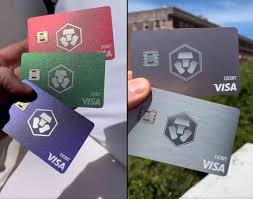
Navigating the Landscape: Different Types of Crypto Cards and Providers
The crypto card market has grown significantly, with various platforms offering their own versions. While they all aim to bridge crypto spending with fiat systems, they differ in features, fees, and geographical availability. Understanding these distinctions is key to finding the card that best suits your needs.
Popular Providers and What They Offer
Many well-known cryptocurrency exchanges and financial platforms have launched their own crypto cards, aiming to integrate spending directly into their ecosystems. Some of the providers you might encounter include:
- Exchange-Linked Cards: Platforms like Coinbase Card, Crypto.com Card, and Binance Card (though availability varies by region) are direct extensions of your exchange account. They allow you to easily spend funds from your balance held on their platform, often offering tiered rewards based on your holdings of their native tokens.
- Lending Platform Cards: Projects such as Nexo Card offer cards that might allow you to spend against a crypto-backed loan (meaning you don't sell your crypto, but use it as collateral for a fiat loan) or directly from your interest-earning crypto balance.
- Specialized Crypto Card Providers: Other companies focus primarily on card services, sometimes integrating with multiple wallets or offering unique features.
It's important to research each provider thoroughly, as their offerings can change frequently based on market conditions and regulatory shifts.
Key Features to Compare When Choosing a Crypto Card
With so many options, how do you pick the right one? Here are the critical factors to compare:
- Fees (The Hidden Costs):
- Conversion Fees: This is arguably the most important fee. Most cards charge a small percentage (e.g., 0.5% - 2.5%) when your crypto is converted to fiat at the point of sale. This can add up quickly with frequent use.
- Annual/Monthly Fees: Some cards might have recurring fees, though many popular ones are free.
- ATM Withdrawal Fees: If you plan to use it for cash withdrawals.
- Foreign Transaction Fees: Crucial if you travel internationally.
- Supported Cryptocurrencies: Check which digital assets you can spend. While most support major ones like Bitcoin (BTC), Ethereum (ETH), and popular stablecoins (USDT, USDC), some might offer a wider range or prioritize their own native tokens.
- Reward Structures: This is a major selling point for many users. Compare:
- Cashback Rates: What percentage of your spending do you get back?
- Reward Crypto: Do you earn rewards in Bitcoin, the card's native token (like CRO for Crypto.com), or another asset?
- Tiers & Staking Requirements: Do higher reward rates require you to stake (lock up) a certain amount of the provider's native token? This can be a significant investment.
- Geographic Availability: Crypto card offerings vary greatly by country and region due to differing regulations. Ensure the card is available and fully functional where you live and plan to use it.
- Spending Limits: Be aware of daily, weekly, or monthly spending and ATM withdrawal limits, as these can vary significantly between providers and card tiers.
- User Interface & Support: A good mobile app, easy balance management, and responsive customer support can greatly enhance your user experience.
By carefully evaluating these factors, you can make an informed decision and choose a crypto card that aligns with your spending habits and crypto goals.
Challenges and Considerations
While crypto cards offer undeniable convenience, it's vital for users to be fully aware of the lesser aspects and potential pitfalls. Understanding these challenges will help you use your crypto card wisely and avoid any unwelcome surprises.
Fees: Beyond the Obvious
We touched on fees in the previous section, but it's worth emphasizing them here as a potential challenge. While many cards boast "no annual fees," the real cost often lies in the conversion fees applied each time your crypto is converted to fiat at the point of sale. These can range from a fraction of a percent to several percent per transaction, eating into your spending power, especially if you use the card frequently. Always check the fine print for foreign transaction fees, ATM withdrawal fees, and any other hidden charges that could erode the benefits.
Taxation: The Capital Gains Catch
This is perhaps the most significant consideration for crypto card users in many jurisdictions, particularly in countries like the United States. Each time you use your crypto card to make a purchase, and your cryptocurrency is converted to fiat, it's generally considered a taxable event. If the crypto you spent has increased in value since you acquired it, you've realized a capital gain, which is subject to tax.
For example, if you bought 0.001 BTC for $20 (when BTC was $20,000) and later use your card to spend that 0.001 BTC when Bitcoin is worth $30,000, you've realized a $10 capital gain ($30 - $20). Keeping accurate records of every transaction (cost basis, sale price, date) can become complex and time-consuming, requiring diligent tracking or specialized crypto tax software. Ignoring this can lead to unexpected tax liabilities.
Geographic Restrictions: Not Available Everywhere
Despite their global ambition, crypto card availability is heavily dependent on regional regulations and partnerships. A popular card available in Europe might not be accessible in the United States, or vice versa. Even within countries, specific features or reward tiers might be limited. Always verify the card's full functionality in your specific location before committing.
Underlying Volatility Exposure: A Constant Shadow
While stablecoins help mitigate volatility for certain transactions, if you're spending assets like Bitcoin or Ethereum directly through your card, you're still exposed to their price swings right up until the moment of conversion. If your BTC drops significantly in value just before you make a large purchase, you might end up spending more units of BTC than you initially planned to cover the cost. It's a reminder that even with instant conversion, the underlying asset's value dictates how much "spending power" you truly have.
Security and Custody: Your Keys, Your Crypto?
Most crypto cards require you to hold your digital assets within the card issuer's platform (which is a centralized exchange or lending platform). This means you are entrusting your funds to a third party, subjecting them to potential risks like platform hacks, insolvency, or regulatory freezes – risks that are mitigated when you hold crypto in your own self-custodied wallet ("not your keys, not your coins"). While reputable issuers employ strong security measures, it's a trade-off in decentralization for the sake of convenience.
KYC/AML Requirements: The Price of Bridging
To comply with Anti-Money Laundering (AML) and Know Your Customer (KYC) regulations, virtually all legitimate crypto card providers will require you to complete a thorough identity verification process. This involves submitting personal documents, just like opening a traditional bank account. While necessary for legitimacy and combating illicit finance, it means sacrificing the anonymity that some users seek in the crypto space.
By keeping these challenges in mind, crypto card users can make more informed decisions, manage their expectations, and navigate the landscape with greater confidence.
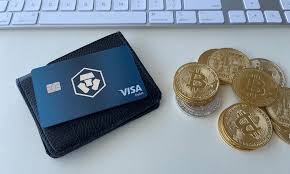
The Future of Crypto Cards: Towards Mainstream Adoption?
Crypto cards have already come a long way, transforming from niche experiments into increasingly common tools for digital asset holders. But what does the future hold for these essential bridges, and could they truly pave the way for crypto's mainstream financial adoption? The outlook is largely positive, driven by continued innovation and evolving regulatory landscapes.
Innovation: Beyond Simple Spending
The current generation of crypto cards primarily focuses on converting crypto to fiat at the point of sale. However, future iterations are likely to offer much deeper integration and more sophisticated features:
- Deeper DeFi Integration: Imagine cards that can automatically draw from yield-bearing stablecoin pools or collateralize small, instant loans for purchases without you manually moving funds.
- Tokenized Asset Spending: As real-world assets (RWAs) become increasingly tokenized on blockchain, future cards might enable spending directly from tokenized equities, real estate, or other illiquid assets, instantly converting them to fiat at the point of purchase.
- Enhanced Loyalty Programs: Beyond simple crypto cashback, we could see more dynamic reward systems tied to specific DeFi protocols, NFT ownership, or Web3 activities.
- Direct Crypto Payments (Eventually): While still a distant goal for mainstream retail, crypto cards could evolve to facilitate direct crypto payments at a growing number of merchants, acting as a gateway until direct acceptance is widespread.
Regulatory Developments: A Path to Clarity
The "Wild West" days of crypto are slowly giving way to increasing regulatory clarity. Governments worldwide are actively working on frameworks for digital assets, including stablecoins and the services that facilitate their use. Clearer regulations, while potentially introducing more compliance requirements for issuers, could be a significant catalyst for growth. They would reduce uncertainty, attract more traditional financial institutions into the crypto card space, and enhance consumer protection, ultimately building greater trust and enabling broader adoption. We're already seeing this in regions like the EU with MiCA (Markets in Crypto Assets) regulations.
Role in Web3 Adoption: Blurring the Lines
Crypto cards play a crucial role in onboarding new users into the broader Web3 ecosystem. They act as a familiar entry point, allowing users to leverage their digital assets in the everyday physical world. As Web3 applications like decentralized social media, gaming, and metaverses become more integrated into daily life, crypto cards will be key in bridging the digital identity and financial activity within these new environments with real-world spending needs. They blur the lines between our digital and physical financial lives.
Towards True Decentralized Spending?
While most current crypto cards rely on centralized issuers, the long-term vision of Web3 often leans towards decentralization. We might see the emergence of more truly decentralized spending solutions that leverage self-custody wallets or more direct peer-to-peer crypto payment rails without intermediaries. Crypto cards are a vital stepping stone, accustoming users and merchants to the idea of spending digital assets, paving the way for even more innovative and decentralized solutions in the future.

Conclusion: Your Wallet's Next Evolution
The journey from a purely speculative asset to a practical medium of exchange is a long one for cryptocurrency, but crypto cards are proving to be one of the most effective and essential accelerators on that path. They embody the practical utility that many have long sought from digital assets, transforming abstract blockchain balances into tangible spending power.
Throughout this article, we've seen how these innovative cards offer compelling benefits: from the sheer convenience of spending crypto anywhere Visa or Mastercard is accepted, to the attractive rewards that put more crypto back in your pocket, and the enhanced accessibility that seamlessly blends traditional retail with the digital economy. While challenges like managing taxation and understanding the underlying risks are crucial considerations for any user, the overall value proposition of crypto cards is undeniable.
Ultimately, crypto cards are more than just a payment tool; they are a vital bridge, connecting the dynamic, decentralized world of crypto directly with the everyday financial lives of millions. They simplify the complex, making digital asset management a more integrated and intuitive experience. As innovation continues to push boundaries and regulatory landscapes mature, these cards are set to become an even more indispensable part of our financial toolkit.
They represent not just an evolution in payment methods, but a tangible step towards a future where digital assets are truly fluid, empowering individuals with greater control and flexibility over their money. Your traditional wallet is about to get a whole lot more interesting and powerful!


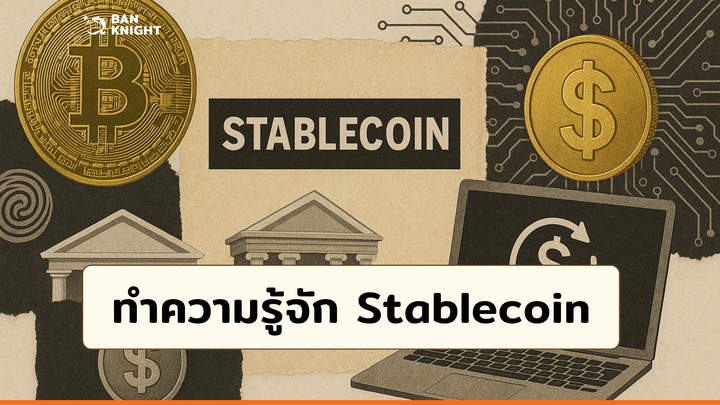
Comments ()